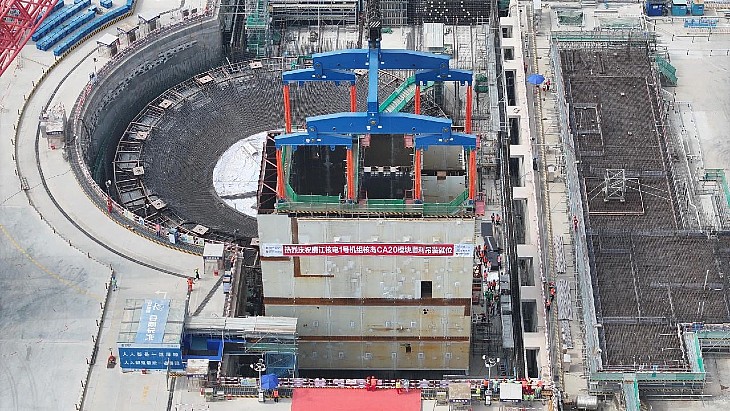
The cuboid-shaped CA20 module will comprise plant and equipment for used fuel storage, transmission, the heat exchanger and waste collection, among other things.
It means that construction continues to progress at the first of two CAP1000 units planned as the initial phase of the plant, which will eventually house six such reactors.
The construction of the first two 1250 MWe CAP1000 reactors - the Chinese version of the Westinghouse AP1000 - at the Lianjiang site was approved by China's State Council in September 2022. Excavation works for the units began in the same month, with the pouring of first concrete for the foundation of unit 1 completed at the end of September this year. Lianjiang unit 1 is expected to be completed and put into operation in 2028.
Once all six CAP1000 units at the site are completed, the annual power generation will be about 70.2 TWh, which will reduce standard coal consumption by over 20 million tonnes, and reduce carbon dioxide emissions by over 52 million tonnes, sulphur dioxide by about 171,000 tonnes and nitrogen oxides by about 149,000 tonnes.
State Power Investment Corp (SPIC) says the Lianjiang plant will be the first nuclear power project in China to adopt seawater secondary circulation cooling technology as well as the first to use a super-large cooling tower.